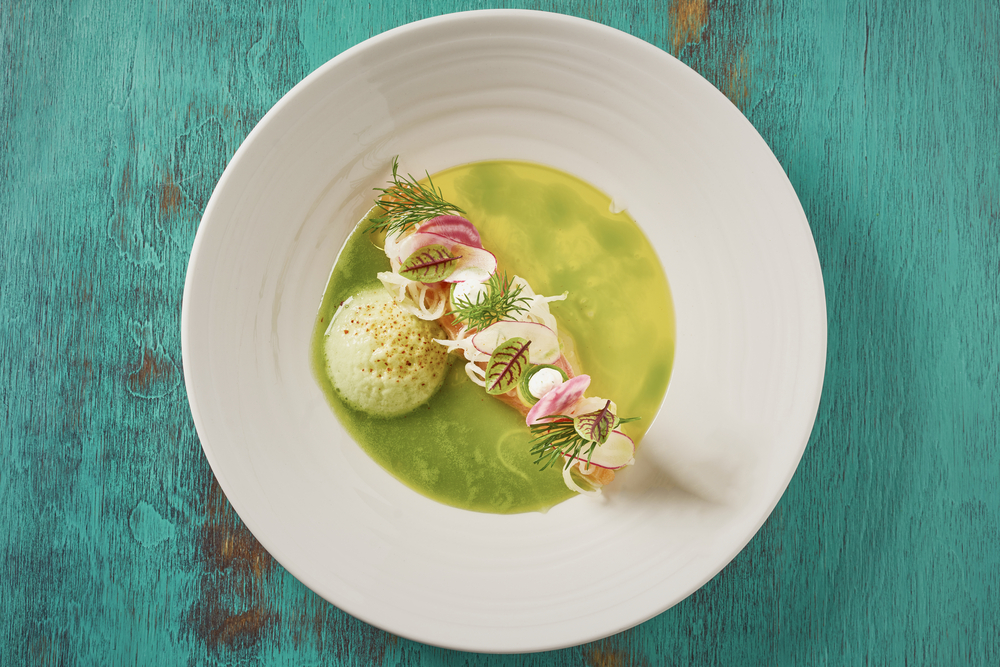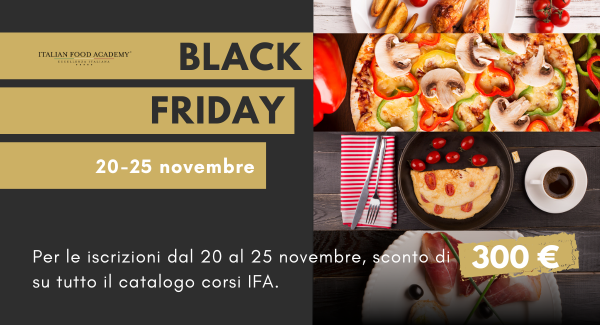Plate has now become a real art. Dishes now look like paintings, beautiful to look at, which are appreciated for the shapes, colors, and creativity used by the chef to impress guests. In an age when the sense of sight is hyperstimulated, it is well understood how the gastronomic experience should start precisely from observing the composition of the dish.
In addition to creativity, which is certainly not taught but learned in the field, there are rules to follow and mistakes to avoid to get no small amount of results right away.
First, the approach; one must remember that a dish must:
- attract attention
- intrigue, invite
- Making the most of each ingredient
- create a balanced composition
1. Color matching.
The component chromatic is critical In the art of plating. The latest trends point to the contrast of colors or to total white. In either case, important is to try to preserve the original color of the ingredient, without unnatural alterations.
2. The shapes: geometries in the plate.
In this case, while the choice of shapes is left to the creativity of the chef, it is also true that balance and aesthetic taste are the watchwords. One should also not be excessive in size and it is always good to combine liquid and solid textures to make the dish more original.
When it comes to shapes, this principle also applies to the plate: whether round or rectangular, the important thing is to highlight the food, and to do this, simply divide the plate with an imaginary line into 4 parts and arrange the dishes in such a way as to make them the protagonists of the support, creating an alternation of empty and full spaces.
3. About plate.
In general, the Ideal color for an ideal plating the winner is always porcelain white, or at least a single color. It is best, therefore, to avoid a dish that is too gaudy or multicolored, which would not highlight the dish at all.
Square and wide plates are very versatile and can be used for pasta, fish, and fruit, for example.
On the other hand, round-bottomed dishes are ideal for presenting soups, first courses, and some types of main courses.
If the plate has a round shape, it is better to arrange the food in the center and without overdoing the decorations, which are fine for rectangular plates.
Chef's Cut: The Art of Kaiseki with Niki Nakayama from The Art of Plating on Vimeo.
4. The personal touch, always!
For those who are new to the plating techniques, the suggestion is to replicate compositions made by other chefs, perhaps trying to replace some elements with a personal touch.
The key is to observe, watch, study and take notes. Many chefs make platters by literally drawing them on sheets of paper. You could also do it this way, try to store in your mind as many styles, examples that you think are interesting, the most appropriate color combinations, the most appealing shapes.
After a long period of study, however, give way to imagination, creativity, trying to bring out one's own style, one's own signature in the dish, which is recognizable.
Do you want learn the techniques of plating And learn how to achieve your own personal style? Discover the course in the art of plating by Italian Food Academy and learn from the greats chef. A rich parterre of lecturers will guide you through the most cutting-edge techniques, styles and trends in this creative art. Roy Caceres, Felice Lo Basso, Davide Damiano, Paolo Barichella, Eugenio Boer, Ivana Carmen Mottola, Roberta Schira. The courses are held at locations in Milan and Rome, and in this video, you can get a taste of what happens in the workshop:
Source: Angela Simonelli - At the school of food design, plating with taste and creativity










